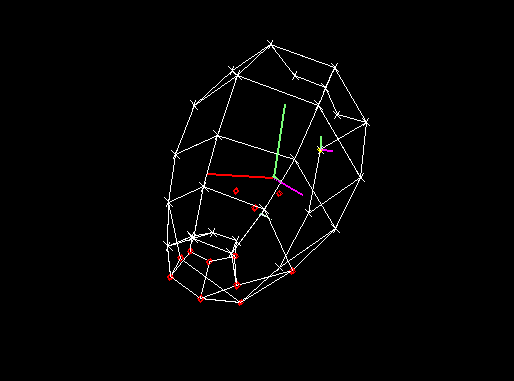 Figure 4.
Surface Attachments.
Figure 4.
Surface Attachments.Previous: The Basic Model Next: Adding Facial Actions
A surprising amount can be accomplished simply by attaching (enveloping)
the face to the jaw bone. Rather than using the several hundred control
points present in the final surface, and thus having to resolve those envelopes
with any other facial actions, the jaw controls the shape of the coarsest
resolution of the surface, freeing other actions to work on the details
of the face.
 Figure 4.
Surface Attachments.
Figure 4.
Surface Attachments.
The basis of animating with multi-resolutions surfaces is to use a "top-down"
approach, animating the coarsest level of detail first and adding additional
effects to the details later. To animate the jaw, 12 control points at
Level 0 were attached to the jaw bone (enveloped with weight 1 in SoftImage
parlance). These points are high-lighted in red in Figure 4.
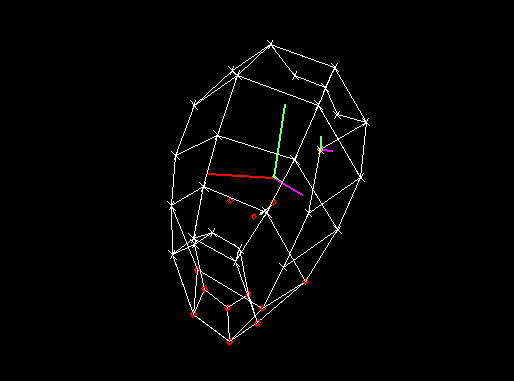 Figure
5. Opening the Jaw.
Figure
5. Opening the Jaw.
When the jaw is rotated, Level 0 acts appropriately deforming the surface
as would a normal b-spline of the same resolution and shape. But with a
hierarchical spline surface details (in this case all the facial features)
are carried along with the Level 0 deformation with very little distortion.
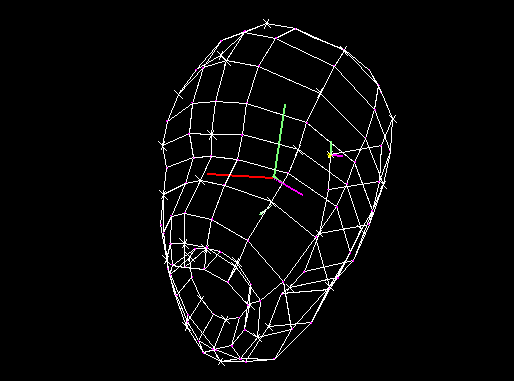 Figure
6. Level 1 with the jaw open.
Figure
6. Level 1 with the jaw open.
Figure 6 simply displays the results of the Level 0 deformation on Level
1 of the model, Figure 7 is Level 2 and Figure 8 shows the entire model
with all levels.
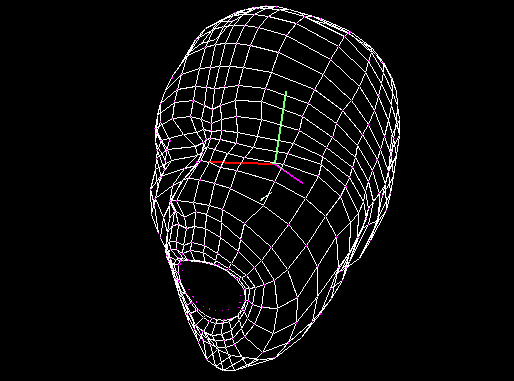 Figure
7. Level 2.
Figure
7. Level 2.
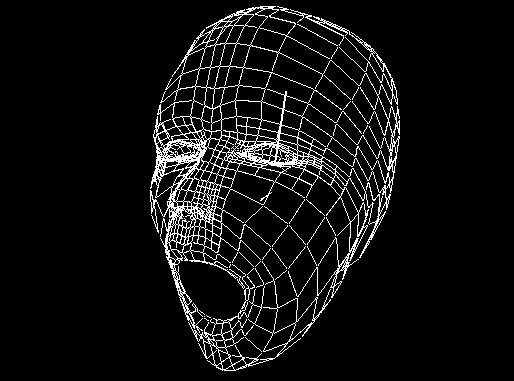 Figure
8. All Levels.
Figure
8. All Levels.
Note that this effect is not the same as you would get by attaching/enveloping
all the control points of a traditional B-spline.
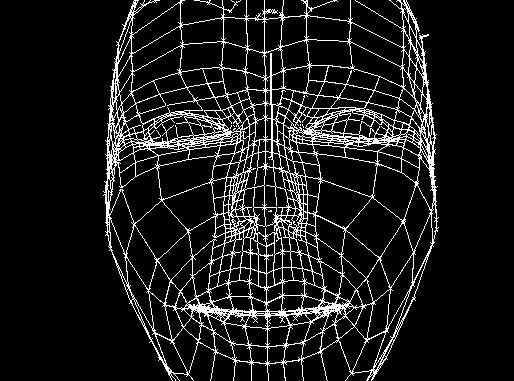 Figure
10. Jaw Closed
Figure
10. Jaw Closed
The following figures show the results of moving the jaw around. No
other effects besides the Level 0 attachments/enveloping was used.
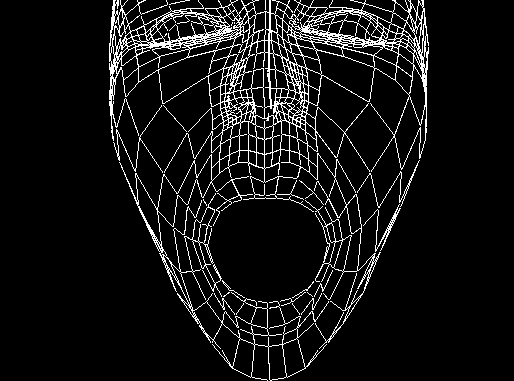 Figure
11. Jaw Open
Figure
11. Jaw Open
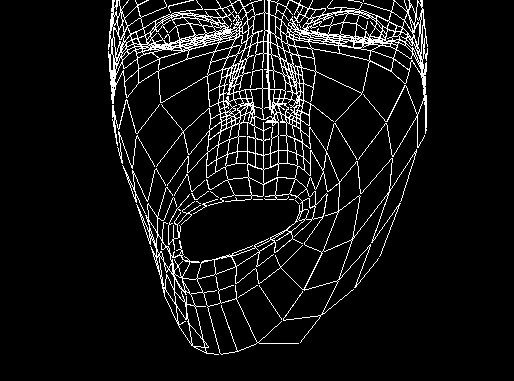 Figure
12: Jaw open & twisted
Figure
12: Jaw open & twisted
Previous: The Basic Model Next: Adding Facial Actions